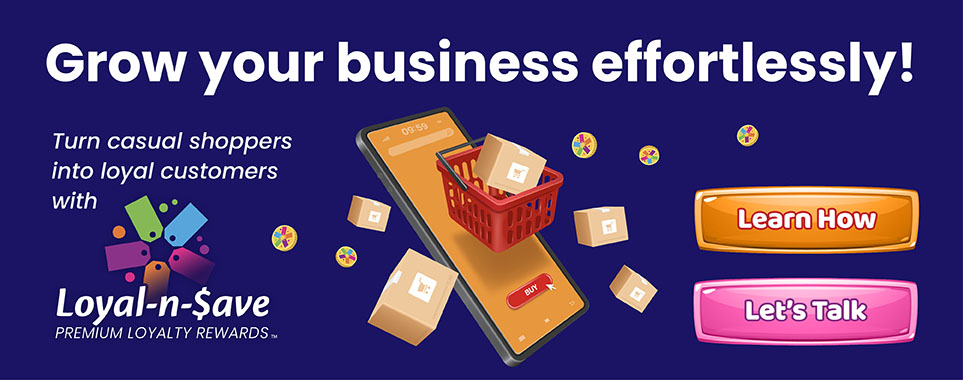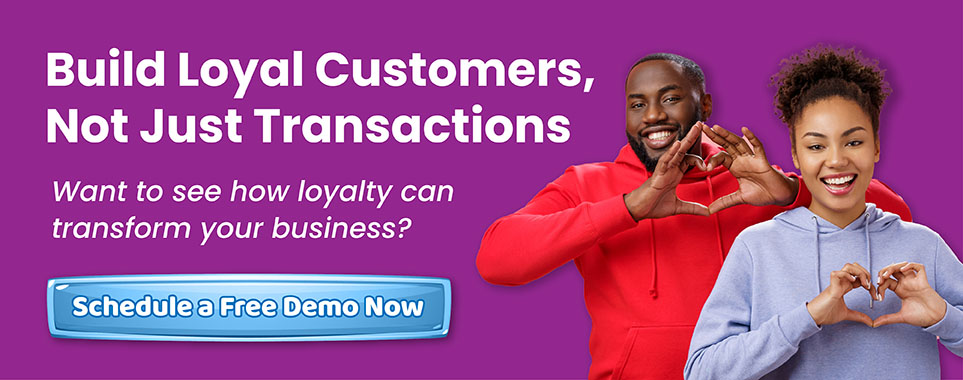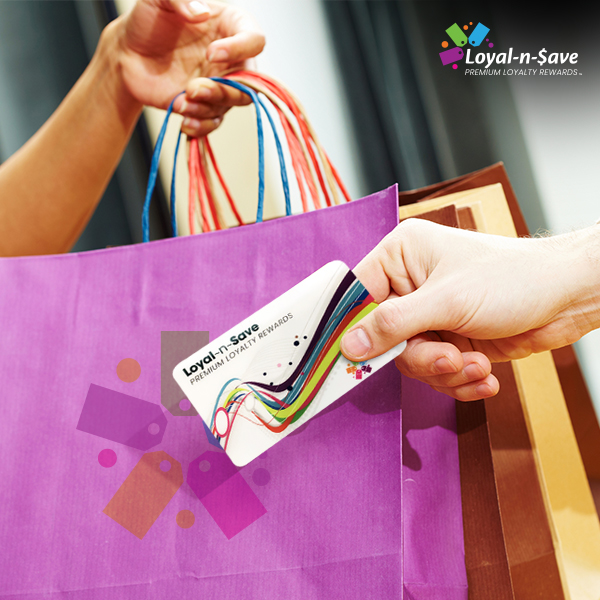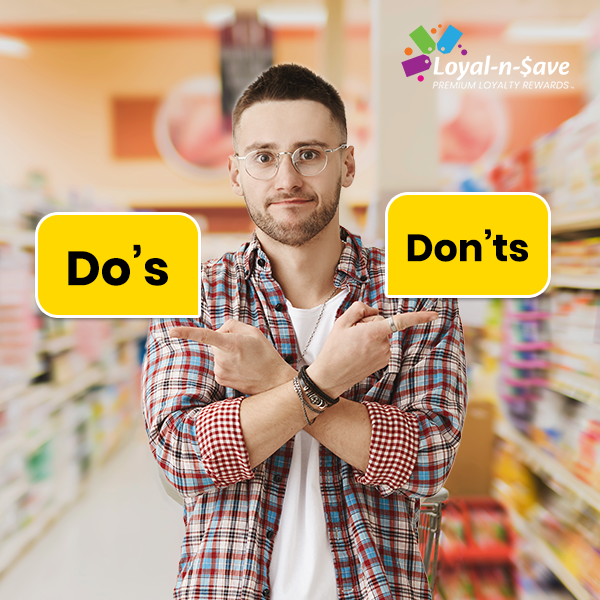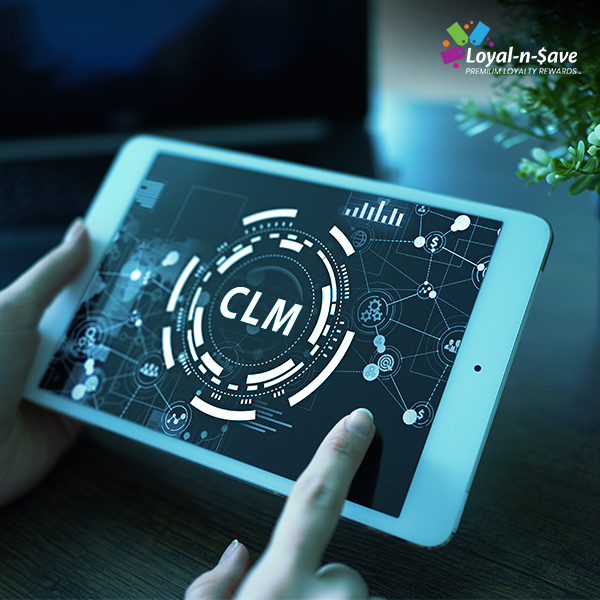Ways to Craft a Unique Loyalty Program for Your eCommerce Business
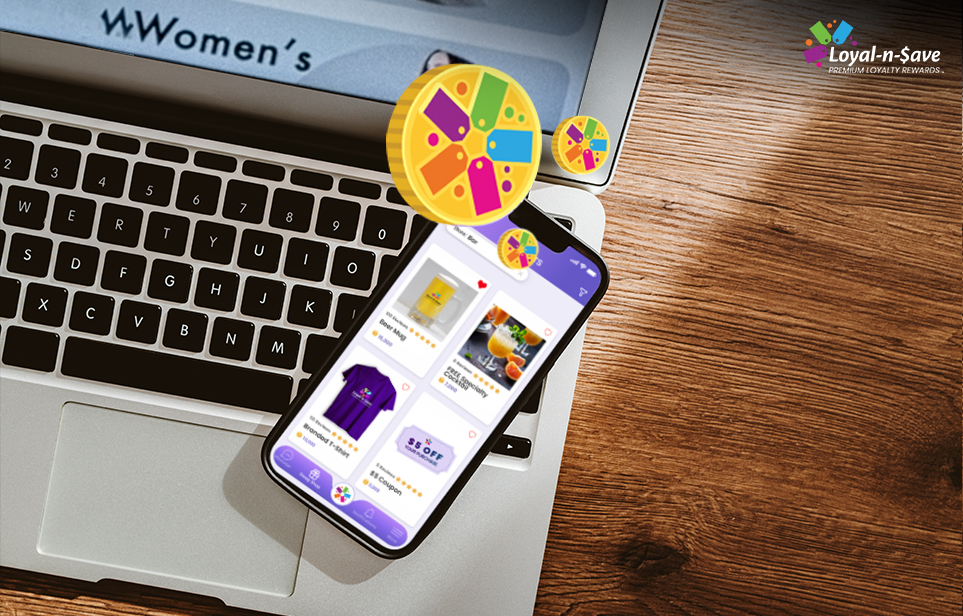
In this fast-paced world of ecommerce, attracting customers is only half the battle won. Keeping them coming back to your stores is where true success lies. With countless options readily available online, modern shoppers can switch brands if they don’t feel valued. This is where ecommerce loyalty programs have a significant role, as they help transform one-time buyers into lifelong customers by offering lucrative incentives and personalized experiences.
Studies show that increasing customer retention rates by about 5% can boost profits by 25%-95%. This highlights the immense value of improving customer loyalty, which makes it a top priority for online businesses looking to scale sustainably.
In this blog post, we will learn about the importance of ecommerce loyalty programs, their implementation and benefits, and how to maintain and improve loyalty programs for long-term success.

Significance of Loyalty Programs
Loyalty programs are structured reward systems designed to encourage repeat purchases by offering customer-specific incentives like points, discounts, cashback, or exclusive perks. These programs help businesses build long-term customer relationships and increase customer retention and loyalty.
For online businesses, loyalty programs are of great significance, especially in this competitive ecommerce landscape where acquiring new customers proves expensive. They boost customer lifetime value, drive repeat sales, and improve customer satisfaction.
By providing personalized rewards and exclusive benefits, businesses can establish a unique identity, improve customer engagement, and create a loyal customer base.
What Is an Ecommerce Loyalty Program?
This loyalty program is designed to nurture and reward their loyal customers for their repeat business. These programs offer rewards, points, or exclusive benefits for purchases that can be redeemed for special offers, discounts, or other perks. Loyalty programs encourage ongoing customer engagement and increase lifetime value by making each interaction more rewarding.
How Does It Work?
1. Customers Earn Rewards: Customers receive rewards or points for specific actions with the ecommerce store, like making a purchase, referring a friend, writing reviews, following on social media, or subscribing to newsletters.
2. Accumulate Points: The more customers shop or engage with the brand, the more points they collect.

3. Redeem Rewards: Customers can anytime redeem their accumulated reward points for free products, discounts, free shipping, exclusive offers, or early access to sales.
How It Helps Businesses Retain Customers
Ecommerce loyalty programs help businesses retain customers by incentivizing repeat purchases with rewards like discounts, points, cashback, or exclusive perks. When customers receive benefits for their continuous shopping, they are more likely to return instead of switching to competitors.
By offering rewards for actions like referrals, reviews, or higher spending, businesses create a sense of value and appreciation, encouraging long-term relationships. It increases customer retention and boosts revenue by encouraging frequent and higher-value purchases.
Why Should You Implement an Ecommerce Loyalty Program?
Ecommerce loyalty programs are an effective marketing strategy that drives revenue and brand allegiance.
These programs can benefit merchants in several ways:
1. Easier Customer Acquisition
Ecommerce loyalty programs can attract new customers by offering incentives like discounts or cashback when joining loyalty programs. These perks help hesitant buyers make a purchase, which makes it an easy decision to complete their order and become a member of the loyalty program.
2. Stronger Brand Allegiance
A rewards program creates a sense of reciprocity, i.e., customers get benefits for shopping with your store and, in return, strengthen brand loyalty. This habit strengthens with the passage of time, resulting in repeat purchases and reducing the chances of customers switching to competitors.
3. Increased Profits
Loyal customers buy more frequently from their preferred store and spend more per order. Acquiring new customers can prove pricier than retaining existing ones. A well-structured loyalty program improves customer lifetime value and drives long-term profitability.
Why Is Customer Loyalty Important in the Ecommerce Industry?
Building a loyal customer base holds great significance in the success of the ecommerce industry. Loyal customers help generate high revenue and prove brand advocates, driving word-of-mouth marketing and influencing potential customers.
Higher Customer Retention
Customer loyalty leads to high retention rates, which means customers can continue purchasing from your store instead of switching to competitors. Loyal customers tend to spend more time shopping as they develop trust in your brand. They are likely to try new products or services, increasing their lifetime value.
There is a high chance that loyal customers refer to their friends and family, bringing in new buyers through word-of-mouth marketing. Since ecommerce is highly competitive, having a solid base of repeat customers ensures consistent revenue and long-term growth.
Increased Sales/AOV (Average Order Value)
Loyal customers usually spend more per transaction than first-time buyers. As they develop trust in the brand and become more familiar with products/services, they are convinced to invest in expensive items or make additional purchases. The higher the AOV from repeat customers, the more profits and revenue growth it contributes to.
Lower Costs Per Customer
Acquiring new customers through ads, promotions, and discounts can prove expensive, but retaining existing customers can significantly reduce marketing costs. Loyal customers need few incentives to make purchases since they already trust the brand. They engage more with your emails, content, and loyalty programs, leading to higher conversion rates.
Your loyal customers are more likely to recommend your store and can attract new buyers at a lower acquisition cost. It improves profitability by reducing the need for continuous high-spend marketing efforts.
In-Depth Customer Insights

Loyal customers provide useful data on shopping behavior and buying preferences. This information helps ecommerce businesses refine their product offerings, pricing strategies, and marketing campaigns. By analyzing repeat buyers’ activities, businesses can create personalized promotions and recommendations, increasing sales and engagement.
Understanding customer needs allows brands to improve their website experience, making navigation and purchasing more seamless. Data-driven decisions based on customer loyalty insights lead to better business strategies and long-term success.
Improved Customer Experience
Focusing on customer loyalty encourages businesses to improve their overall shopping experience. Personalized recommendations, efficient customer support, and exclusive loyalty rewards improve customer satisfaction and encourage repeat purchases.
Happy and satisfied customers will always leave positive reviews, which boosts brand reputation and trustworthiness. Besides, they also provide valuable feedback, which helps refine products, services, and user experience.
How to Implement an Effective Ecommerce Loyalty Program
To start and implement an effective ecommerce loyalty program, you need to consider the following pointers, which will help your business develop a loyalty program that delivers a rewarding and frictionless experience:
1. Define Your Goals
Clearly defining your goals is important to give a strong foundation to your loyalty program’s design. Ask yourself specific questions like whether you want to increase an average order value, encourage referrals, or decrease the churn rate. Answers to these questions will help you plan your ecommerce loyalty program and rewards and help pinpoint key performance indicators (KPI).
2. Understand Customer Preferences
Customize your loyalty program to what your customers value the most. People from different demographics may respond differently to varying types of rewards and incentives. There are several options to choose from, like cashback, discounts, free products, exclusive deals, early access to product releases, and personalized offers.

3. Keep It Simple
Enrollment, participation, and reward redemption in loyalty programs should be simple and hassle-free. Dedicated hubs of the loyalty program should be integrated into your ecommerce store and app. Customers should be able to quickly redeem points or rewards at checkout.
4. Personalize it
Personalization is a common expectation among consumers, and loyalty programs can be useful tools to collect customer data. It helps drive personalization and delivers a tailored experience to your loyal customers.
5. Encourage Engagement
You can drive customer engagement with your loyalty program in numerous ways. One of the easiest ways is to remind customers at regular intervals of time for their enrollment and total earned points. You can also incentivize non-commercial actions like user reviews, frequent logins, making referrals, and completing a personal profile to encourage customer engagement.
6. Gamification
You can use certain game elements to improve the shopping experience in your loyalty rewards programs. This is also a better way to connect with your valuable customers and drive customer engagement. Prize wheels, badges, challenges, voting, point milestones, games, and other types of bonuses can all add fun to the loyalty program and make it more engaging.
7. Measure, Analyze, and Adjust
Measure and analyze your loyalty program’s performance on a regular basis. It should include KPIs, which include customer lifetime value, customer retention, purchase frequency, average order value, redemption rate, and breakage rate. No matter which KPIs you track, customize your strategy and execution.
Benefits of Ecommerce Loyalty Programs
These programs reward loyal patrons with discounts, points, or exclusive perks, encouraging them to stay loyal to the brand. Further, they drive repeat purchases and improve customer satisfaction, boosting long-term business growth.
1. Strengthen Customer Relationships
Ecommerce loyalty programs create a sense of appreciation and strengthen the relationship between the brand and customers. With personalized incentives and rewards, businesses can make shoppers feel valued, increasing trust and engagement.
Regular interactions through loyalty programs keep customers connected, engaged, and invested in the brand. It fosters long-term retention, making customers more likely to recommend the brand to others.
2. Retain Customers and Get Repeat Business
Ecommerce loyalty programs encourage customers to purchase by offering incentives like points, cashback, or exclusive discounts. When customers get the benefits of staying loyal, the chances are less that they are likely to shop elsewhere. Retaining customers is essential in ecommerce, where competition is high, and new customer acquisition costs can prove expensive.
Repeat purchases ensure customers return to the store regularly and help create a steady sales flow. A well-structured loyalty program fosters habit-forming purchasing behavior, leading to long-term business sustainability.
3. Increase Customer Lifetime Value (CLV)
A well-planned ecommerce loyalty program increases the total revenue a customer generates with the brand. By offering ongoing rewards and incentives, businesses encourage customers to buy more frequently and in large amounts. This extended customer engagement maximizes the overall profit gained from each customer.
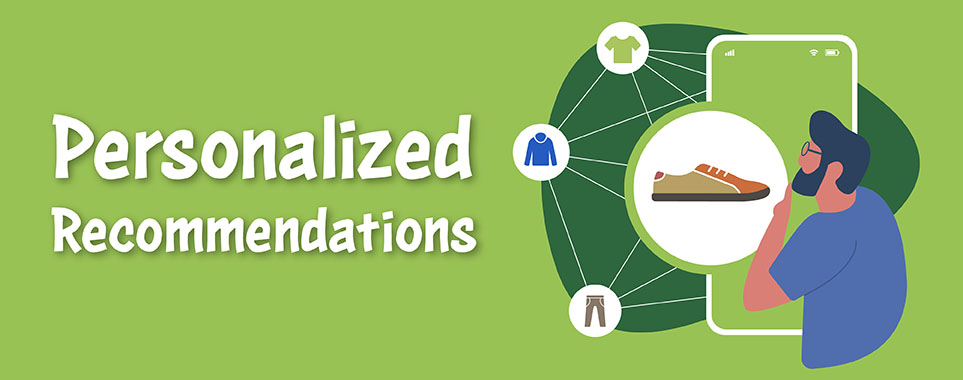
4. Create Upsell & Cross-Sell Opportunities
Loyalty programs allow businesses to promote higher-value products and complementary items to existing customers. To encourage upselling, you can provide exclusive member-only discounts on premium products while personalized recommendations drive cross-selling.
Customers in loyalty programs are more likely to explore additional product categories and try new offerings. Strategic promotions within the loyalty programs can highlight add-ons or bundles, thereby increasing the average order value.
5. Increased Sales and Revenue
Loyalty programs for ecommerce create a consistent revenue stream for ecommerce businesses by incentivizing repeat purchases. Loyal customers usually make frequent purchases, leading to higher overall sales. Discounts, special offers, and exclusive deals within the loyalty program encourage customers to shop more often.
Increased purchase frequency leads to a more stable income, helping ecommerce businesses scale and grow. Besides, positive word-of-mouth marketing from loyal customers can attract new buyers and boost sales.
6. Reduce Customer Acquisition Costs (CAC)
Customer loyalty programs for the ecommerce industry help retain customers, reducing the need for constant investment in acquiring new ones. Retaining customers is more affordable than acquiring a new one. It helps businesses save on advertising and marketing costs.
Happy and loyal customers refer to friends and family, bringing in new buyers at little to no extra expense. Referral and rewards-based loyalty programs drive organic growth, making marketing efforts more efficient.
7. Level Out Seasonal Sales
Several ecommerce businesses experience fluctuations in sales due to seasonal demand. Loyalty programs stabilize revenue by encouraging repeat purchases even during off-peak times. Offering bonus points, exclusive discounts, or limited-time rewards during slow periods can help maintain customer engagement.
How to Maintain and Improve Your Ecommerce Loyalty Program
Continuous optimization is essential to make your ecommerce loyalty rewards program successful. You can research online to find interesting and productive ecommerce loyalty program ideas that can be implemented for your ecommerce business.
Businesses can keep customers engaged and maximize program effectiveness by offering various rewards, personalizing experiences, simplifying participation, refreshing offers, and gathering feedback.
Offer a Variety of Rewards
Customers have different preferences, so providing them with a wide variety of rewards like cashback, discounts, exclusive access, or early product releases keeps the program appealing. Tiered loyalty programs encourage customers to shop more, whereas flexible redemption options increase customer satisfaction.
Offering short- and long-term incentives ensures customers stay motivated to participate in loyalty programs. Gamifying the experience with bonus challenges or surprises improves customer engagement.
Personalize Customer Experience
Customization makes ecommerce rewards programs more engaging by offering customized rewards to individual shopping behaviors. Using customer data to recommend relevant products, exclusive offers, or birthday discounts improves their connection to the brand.
Personalized emails, app notifications, or exclusive VIP tiers based on purchase history make customers feel special and appreciated. A data-driven approach ensures customers receive rewards that align with their buying preferences, thereby increasing customer retention.
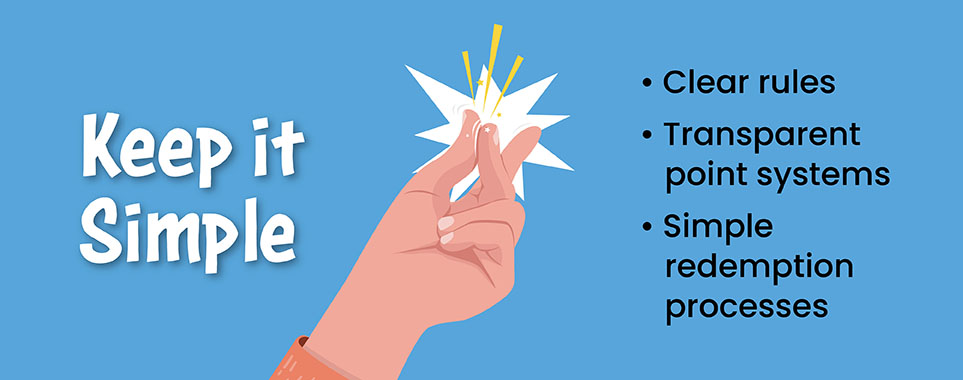
Make the Program Easy to Understand
A loyalty program should have clear rules, transparent point systems, and simple redemption processes to encourage customer participation. Simple messaging on how to earn and redeem rewards should be available on the website, checkout page, and emails.
Visual progress trackers help customers see how close they are to their next rewards, which keeps them motivated. A frictionless and intuitive experience increases program adoption and long-term participation.
Keep the Program Fresh
Regular updates and new incentives prevent the loyalty program from becoming uninteresting. Introducing limited-time rewards, seasonal bonuses, or surprise gifts keeps customers excited and engaged.
Partnering with complementary brands to provide unique rewards can also add variety. Adjusting the program structure based on customer behavior and feedback ensures continued effectiveness.
Value Customer Feedback
Customer insights have a vital role in optimizing an ecommerce loyalty program. Carrying out surveys, analyzing reviews, and monitoring customer engagement data identifies areas for improvement.
Customer feedback allows businesses to refine reward structures, address pain points, and introduce features that customers value. By responding to customer needs, businesses can ensure their loyalty program remains relevant.
Parting Words
A well-designed loyalty program helps in customer retention, boosts revenue, and strengthens brand relationships. Businesses can turn occasional shoppers into lifelong customers by offering valuable rewards, personalizing experiences, and keeping the program engaging. In today’s competitive ecommerce landscape, investing in an effective loyalty strategy is no longer optional or essential for long-term success. Start optimizing your loyalty program today to build a loyal customer base and enjoy sustainable growth.
Posted on Apr 2, 2025



